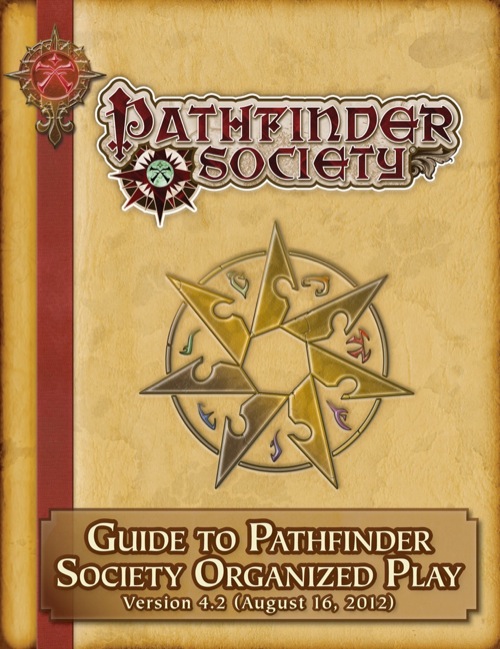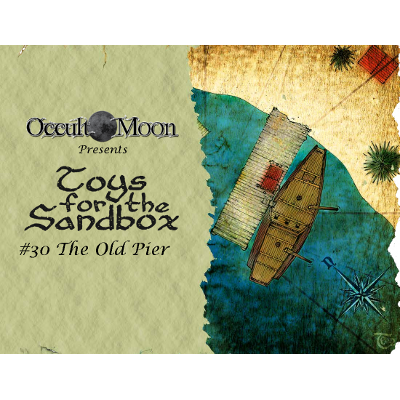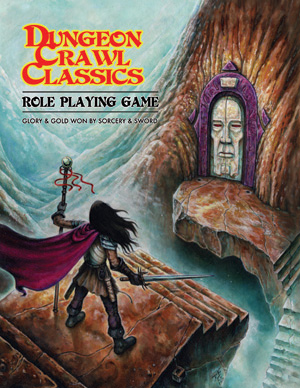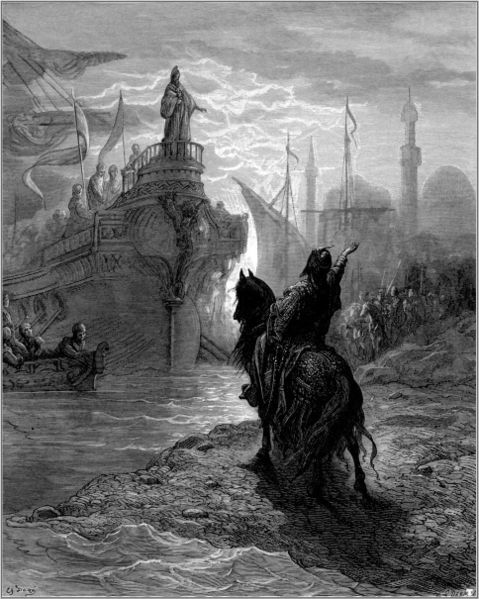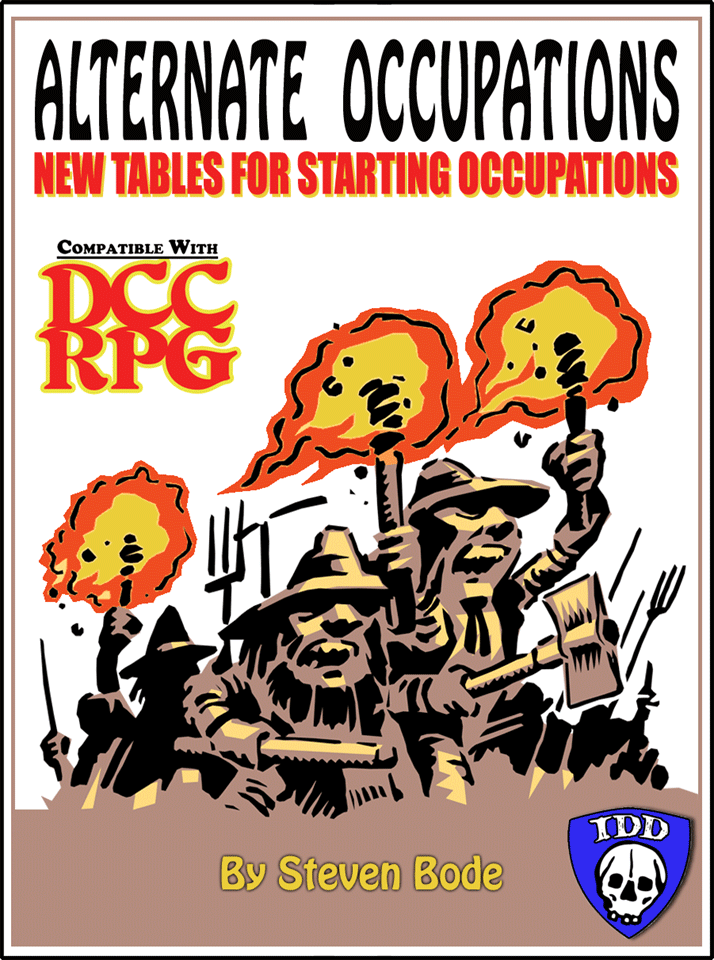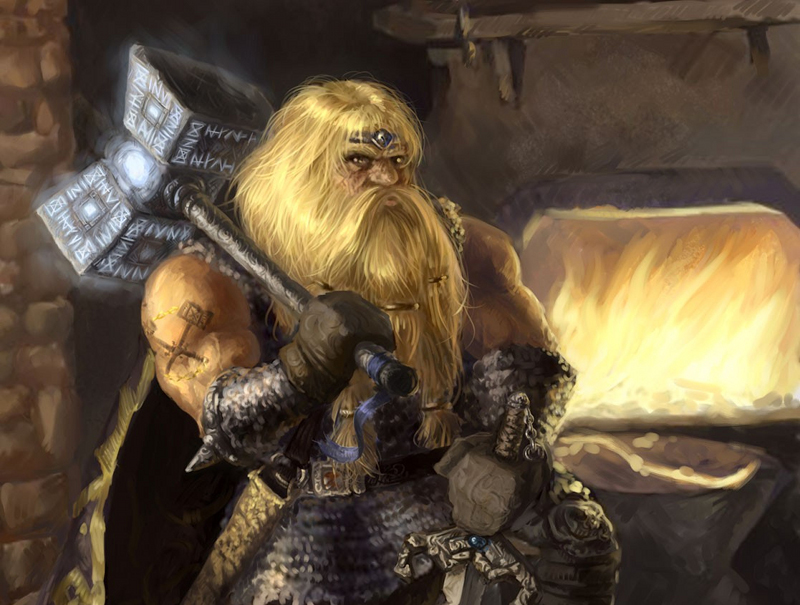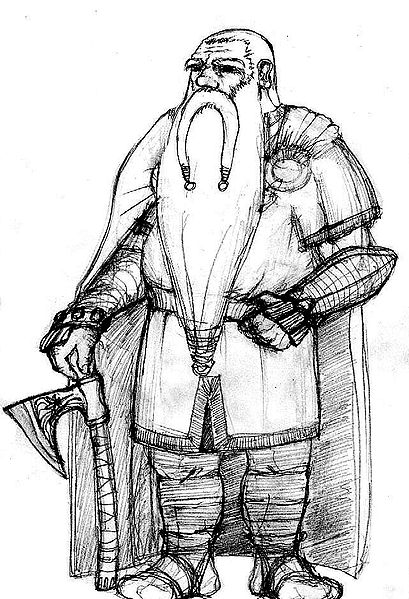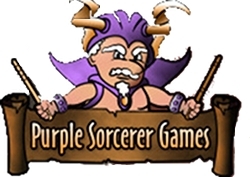 The Iron Tavern recently had the privilege to interview Jon Marr of Purple Sorcerer Games. Purple Sorcerer Games is a third-party publisher for Goodman Games Dungeon Crawl Classics RPG.
The Iron Tavern recently had the privilege to interview Jon Marr of Purple Sorcerer Games. Purple Sorcerer Games is a third-party publisher for Goodman Games Dungeon Crawl Classics RPG.
Jon and Purple Sorcerer Games have been busy publishing new adventures for Dungeon Crawl Classics such as Perils of the Sunken City, The Ooze Pits of Jonas Gralk and the soon to be released A Gathering of the Marked.
In addition to adventures being published Purple Sorcerer Games, Jon has been putting out some wonderful electronic tools for Dungeon Crawl Classics as well. These tools include a 0-level character creator, an upper level character creator and the Crawler’s Companion that is being released for tablets of Android and iOS flavors due to their successful Kickstarter.
And with that, let the interview begin!
___________________________________________
Tell us a little about Purple Sorcerer Games?
Purple Sorcerer Games grew out of a free utility I created for the Dungeon Crawl Classics RPG beta. I knew the totally random nature of creating 0-level characters cried out for a character generator, so I built one over the first weekend after I downloaded the beta. As I began creating an adventure to test the characters I was spitting out, I got the idea to create a location that would make it easy to introduce lots of new parties and adventures. When I showed Perils of the Sunken City to Joseph Goodman from Goodman games, he suggested I become a third party publisher, and here we are.
How did you get your start in gaming?
I’m one of the herd of old-timers that got started in middle school in the late 70’s. I can still remember my first exposure: overhearing a friend in the library describing a magic item. Something electric went through me and I’ve been hooked ever since.
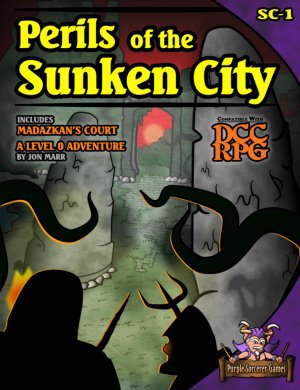 Which gaming system did you first start with in the late ’70’s when your gaming interest began?
Which gaming system did you first start with in the late ’70’s when your gaming interest began?
The first time I played D&D was with a friend who had the white box, though my clearest memory is having my Mom drive me to a neighboring town to purchase the blue box from an awesome used book store that sold games. I remember waiting for the first DMG to arrive.
We quickly branched out to most the early systems: Traveler, Runequest, Chivalry & Sorcerery, The Fantasy Trip, Gamma World, etc. I also spent many Saturdays at the local ‘wargaming society’ playing Squad Leader, Panzerblitz, Ogre, etc. Fun times!
Purple Sorcerer Games develops and designs adventures and software tools for the Dungeon Crawl Classics RPG from Goodman Games. What attracts you to the DCC RPG?
I think the chief thing was just accessibility: the DCC RPG beta gave me a good chance to kick the tires and find out what I liked. I really am of the opinion that the group, and especially the GM, is far more important than the system, but the DCC RPG checks a number of the boxes that are important to me. I liked 3E, but it got a big unwieldy for me at anything past 8th level. 4E was fun, but lacked a certain magic. The DCC RPG is wild, unpredictable and focused on adventure. In other words, built for fun.
Purple Sorcerer largely appears to be a one man effort. Do you have other members on your team? How do you find time to write the online tools, orchestrate a Kickstarter campaign, and release adventure modules for the game? What does a typical day look like?
The last few months have been crazy. I’ll likely be adding some additional contributors in the future, but for now it’s me and my son. (Who helps out with creating the paper miniatures we release with our adventures.) Like most RPG developers, I have a full time job, though I work from home with a very flexible schedule which helps. Most of my adventure/ online tools development happens between midnight and 3 am. It’s been a steady stream of 12-14 hour days during the last stretch, but I’m working out how to spread things out so I don’t get burned out.
Which do you prefer – writing adventures or developing the tools for Dungeon Crawl Classics RPG that Purple Sorcerer offers?
I think they’re very complimentary activities, and it’s one of the reasons I love doing this. I’m a graphic designer/web developer by trade, and was a history major and writer in college, so the things I do for Purple Sorcerer covers all the bases. If I keep rotating between the various aspects that use different parts of the brain I never get bored.
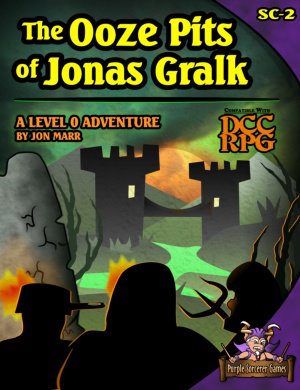 You recently released The Ooze Pits of Jonas Gralk, the second in the Sunken City set of adventures. Can you tell us a little more about the Sunken City and this most recent release?
You recently released The Ooze Pits of Jonas Gralk, the second in the Sunken City set of adventures. Can you tell us a little more about the Sunken City and this most recent release?
The Sunken City is the remains of a great city that has now been largely overtaken by swamp over the course of hundreds of years. Players travel back and forth into the city using demon-powered sending stones. The grand idea for the Sunken City adventures was to create three 0-level adventures: a dungeon crawl, a wilderness/town adventure, and a haunted house. The Ooze Pits of Jonas Gralk is the wilderness/town adventure, and I had a tremendous time stuffing it full of strange swamp monsters and stranger villagers.
Perils of the Sunken City used black and white for the content inside the adventure, whereas The Ooze Pits of Jonas Gralk switched to a color interior. Why the switch?
I love the black and white look of the Goodman Games adventures and Doug Kovacs’ fantastic maps and art. The maps in Perils of the Sunken City were something of an homage to that look. But the first piece of art I created for The Ooze Pits was the Slither’s End town map, and it looked so nice in color I decided to make a switch. Also, I’ll be combining all the Sunken City adventures into a full color hardcover book when they’re complete, so it made sense to make the change now.
From the adventures I have read so far, you seem to hit the “Appendix N” feel of Dungeon Crawl Classics very well. Were you well versed in “Appendix N” literature prior to the launch of Purple Sorcerer games?
I’d read most the classics that others had: LOTR, The Complete Enchanter, Dying Earth, etc, but I’d guess the biggest Appendix N influence for my adventures would be the Lankhmar novels. I love the blend of humor, terror and gonzo imagination.
With your the Lankhmar influence, it begs the question – Fafhrd or Gray Mouser?
The Mouser’s pathos is fun, but I have to say Fafhrd’s, well ‘innocence’ isn’t the right word, but his straightforward world view appeals to me. I’ve been re-reading much of the Lankhmar stuff recently and I’m impressed once again by the sophistication of Fritz Leiber’s writing. I also love that he’s willing to ‘bend genres’ whenever it fits the story. That’s very DCC.
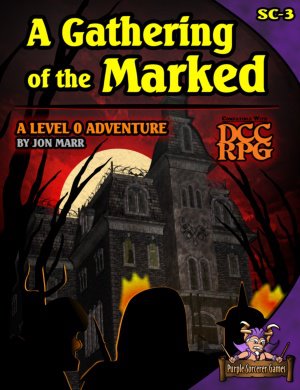 A Gathering of the Marked is the next adventure in the Sunken City series and then your will be moving on to the M series of adventures. Will these be based out of the Sunken City area as well? What level range do you have in mind for the M-series of adventures?
A Gathering of the Marked is the next adventure in the Sunken City series and then your will be moving on to the M series of adventures. Will these be based out of the Sunken City area as well? What level range do you have in mind for the M-series of adventures?
The M-series will chart it’s own course, though there will be links for how to transition from the Sunken City. There will be five adventures, one each for the first five character levels.
You have developed several useful tools on the Purple Sorcerer site, including a 0-level character generator. I know I have used this tool several times. At last count how many 0-level characters have been generated from the tool?
I believe we’re approaching 200,000 eager peasants created. (And the upper level character generator has been used about 10,000 times.)
You recently had a Kickstarter Campaign wrap up for the Crawler’s Companion, an effort to bring Purple Sorcerer tools to tablets of all kinds. What challenges has this project presented you with?
The major challenge is time: working on the program while also turning out the adventures! It’s been interesting dipping a toe in the Mac/iOS side of things, but I’ve learned a lot and things are going well. The backers have been so fabulous, and I try to keep them apprised of what’s going on. We’re still just polishing up the beta, and I have over 40 backers testing the Crawler’s Companion. I’m excited to get working on the extra features, as I really enjoy that aspect of development.
I can imagine finding time has been challenging! With all of the development time for adventures and electronic aids have you had the time to run or play in your own DCC RPG campaign beyond playtesting?
I’ve been following all the Google+ online gaming sessions with great jealousy! Yeah, I haven’t had time for anything outside of playtesting, but I’m looking forward to getting involved once things calm down a bit. I’m likely going to playtest the next Sunken City Adventure online, since I’ve recently moved away from half my regular group! Online GM’ing will be an entirely new experience for me, but I think much of our hobby’s future lies in that direction.
Is there anything else you would like people to know about Purple Sorcerer Games?
Just that I’m so appreciative of everyone’s support, and I’m having a blast creating these things. If you like our free utilities, check out our adventures at RPGNow. They’re fun, they’re a good value, and the sales help support the creation and refinement of all the free stuff we offer online!
______________________________________________
The Iron Tavern wants to thank Jon for taking the time to answer my questions. It was a pleasure interviewing him. Be sure to check out the website for Purple Sorcerer Games and see what adventures and tools they have lined up for us!


